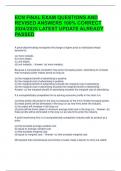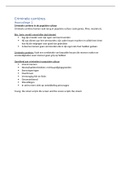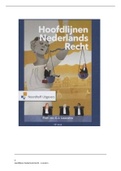Examen
ECN FINAL EXAM QUESTIONS AND REVISED ANSWERS 100% CORRECT 2024/2025 LATEST UPDATE ALREADY PASSED
ECN FINAL EXAM QUESTIONS AND REVISED ANSWERS 100% CORRECT 2024/2025 LATEST UPDATE ALREADY PASSED A price-discriminating monopolist will charge a higher price to individuals whose demand is: (a) more inelastic. (b) more elastic. (c) unit elastic. (d) unit inelastic. - Answer- (a) more inelast...
[Montrer plus]





